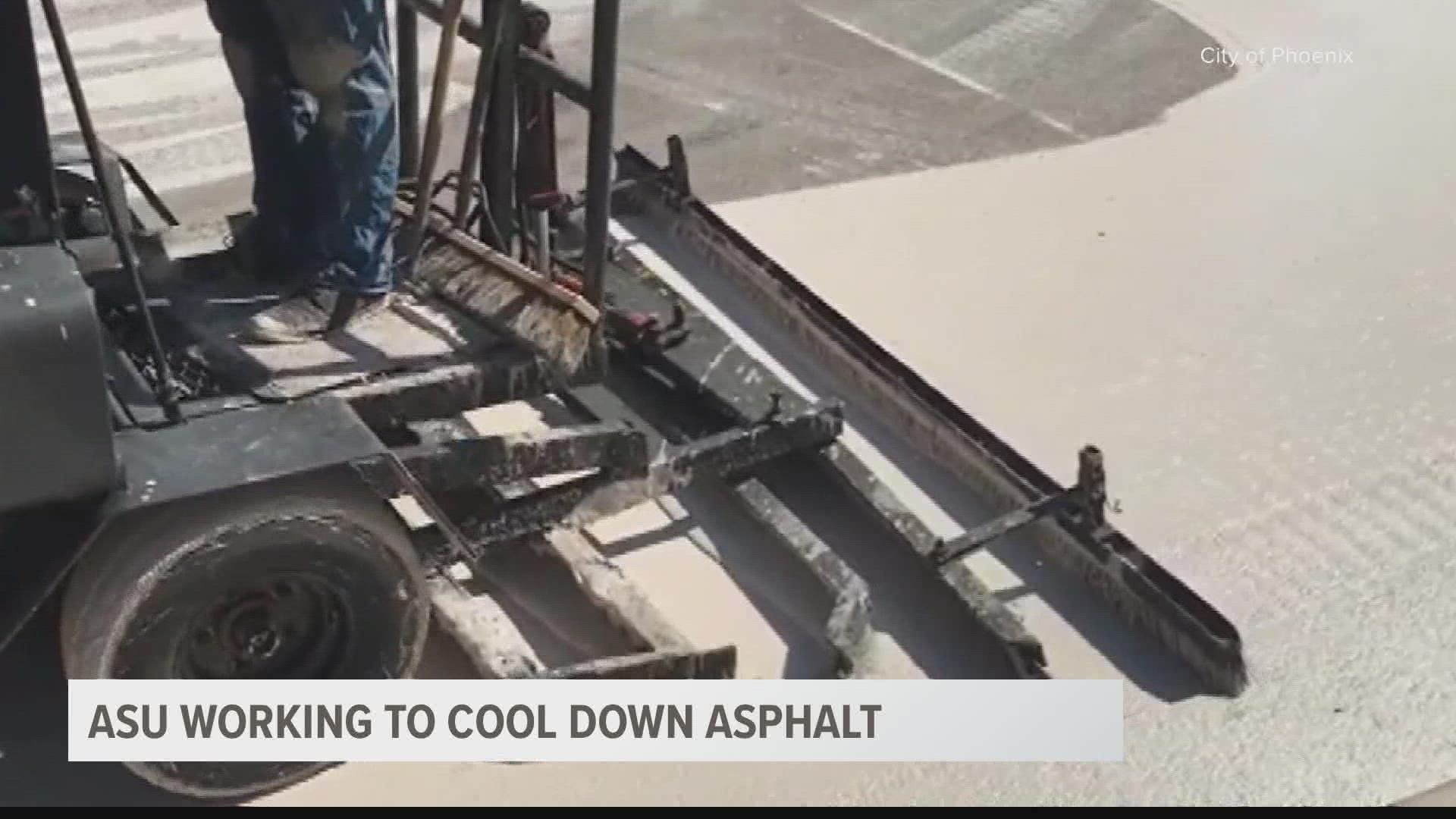PHOENIX — Did you know that the temperature of Phoenix city streets can be as high as 180 degrees in the summer?
The city has been working with Arizona State University to research a cooling solution the city applied to eight neighborhoods and one park last year.
Through the Cool Pavement Pilot Program, certain streets that encompass 36 miles were treated with what they call 'CoolSeal.'
Jennifer Vanos, Assistant Professor in the School of Sustainability at Arizona State University, said it's a lighter colored road surface that has a white-gray tint.
"A lot of companies have created what’s called reflective pavement essentially and it’s a coat," Vanos explained.
How does it work?
"Instead of absorbing so much sunlight, it reflects more of the sunlight back out of the city, back out into space."
So, it shouldn’t feel as hot.
"If it was a traditional dark asphalt it might only reflect about 12% of that sunlight, but with CoolSeal, when it's first applied it reflects about 38%."
One year later, there's still a lot to learn.
"So some of the answers around success for this are going to take about five years to figure out."
But it's safe to say: so far so good.
ASU recently revealed that surface temperatures of the roads with the reflective CoolSeal stayed as much as 12 degrees cooler than non-treated streets all summer around noon.
ASU's team of researchers also took measurements of the air temperatures six feet above the surfaces. During the day, the CoolSeal dropped the air temperature by an average of 0.3 degrees Fahrenheit. Nighttime temperatures improved a bit more, averaging 0.5 degrees cooler.
The City of Phoenix will begin phase 2 of the study in the months to come
Other findings:
- Cool pavement revealed lower surface temperatures at all times of the day versus traditional asphalt.
- Cool pavement had an average surface temperature of 10.5 to 12 degrees Fahrenheit lower than traditional asphalt at noon and during the afternoon hours. Surface temperatures at sunrise averaged 2.4 degrees Fahrenheit lower.
- Sub-surface temperatures averaged 4.8 degrees Fahrenheit lower in areas treated with cool pavement.
- Nighttime air temperature at six feet of height was on average 0.5 degrees Fahrenheit lower over cool pavement than on the non-treated surfaces.
- The human experience of heat exposure at noon and the afternoon hours was 5.5 degrees Fahrenheit higher due to surface reflectivity, but similar to walking on a typical concrete sidewalk.
- Surface solar reflectivity declined over 10 months from a range of 33 to 38 percent to a range of 19 to 30 percent across all eight neighborhoods. Untreated asphalt has a reflectivity of only 12%.
Arizona Weather
Arizona has seen its fair share of severe weather. Here is a compilation of videos from various storms across the Grand Canyon state.

